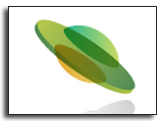
|
CS380: Introduction to Computer Graphics
Spring 2025
|
Instructor |
Prof. Min Hyuk Kim, [Room] 2403, E3-1, [email] |
Course Description
|
This course provides an introduction to 3D computer graphics. The goal of this course is to learn how to form images by computer. We will study the basic methods used to define shapes, materials and lighting when creating computer-generated images for use in film, games and other applications. Covered topics include affine and projective transformations, clipping and windowing, visual perception, scene modeling and animation, algorithms for visible surface determination, reflection models, illumination algorithms, and color theory in depth. |
Time and Place |
(Lecture) Tuesday and Thursday 13:00—14:30, Rm. 1501, E3-1, KAIST
(Lab) Tuesday and Thursday 19:00 - 22:00, Rm. 317, N-1, KAIST
(TA Office Hour) Wednesday 16:00 - 18:00, Rm. 2418, E3-1, KAIST |
Teaching Assistants |
Dongyoung Choi (ex. 7864, )
Seungmin Hwang (ex. 7864, )
Halin Kim (ex. 7864, ) |
Textbook & Materials |
Steven J. Gortler (2012) Foundations of 3D Computer Graphics, MIT Press (available from the KAIST library) |
Prerequisites |
There are no official course prerequisites. However, we assume that you already have programming experience in C/C++ and a basic knowledge of linear algebra. An exposure to calculus and image processing is beneficial. |
Tentative Schedule |
|
| |
Week |
Date |
Lecture |
Reading |
Lecture |
Lab |
Homework |
|
| |
1 |
2/25 |
Intro to Graphics |
Chapter 1 |
|
|
|
|
| |
2 |
2/27 |
Intro to OpenGL |
Chapter 1 |
|
|
|
|
| |
3 |
3/4 |
Hello World 2D in OpenGL |
Appendix A |
|
|
|
|
| |
4 |
3/6 |
Transformation |
Chapter 2 |
|
|
|
|
| |
5 |
3/11 |
Transformation |
Chapter 3 |
|
|
|
|
| |
6 |
3/13 |
Respect |
Chapter 4 |
|
|
|
|
| |
7 |
3/18 |
Frames |
Chapter 5 |
|
|
|
|
| |
8 |
3/20 |
Hello World 3D |
Chapter 6 |
|
|
|
|
| |
9 |
3/25 |
No lecture |
|
|
|
|
|
| |
10 |
3/27 |
No lecture |
|
|
|
|
|
| |
11 |
4/1 |
Quaternions |
Chapter 7 |
|
|
|
|
| |
12 |
4/2 |
Arcball & Trackbal |
Chapter 8 |
|
|
|
|
| |
13 |
4/8 |
Bezier Spline |
Chapter 9 |
|
|
|
|
| |
14 |
4/10 |
Camera Projection |
Chapter 10 |
|
|
|
|
| |
15 |
4/15 13:00~15:45 |
Midterm exam week |
- |
|
|
|
|
| |
16 |
4/22 |
Depth |
Chapter 11 |
|
|
|
|
| |
17 |
4/24 |
Rasterization |
Chapter 12 |
|
|
|
|
| |
18 |
4/29 |
Varying variables |
Chapter 13 |
|
|
|
|
| |
19 |
5/1 |
Material |
Chapter 14 |
|
|
|
|
| |
20 |
5/8 |
Texture mapping |
Chapter 15 |
|
|
|
|
| |
21 |
5/13 |
Sampling |
Chapter 16 |
|
|
|
|
| |
22 |
5/15 |
Reconstruction and resampling |
Chapter 17, 18 |
|
|
|
|
| |
23 |
5/20 |
Color (1) |
Chapter 19 |
|
|
|
|
| |
24 |
5/22 |
Color (2) |
Chapter 19 |
|
|
|
|
| |
25 |
5/27 |
Geometry modeling |
Chapter 22 |
|
|
|
|
| |
26 |
5/29 |
Ray tracing |
Chapter 20 |
|
|
|
|
| |
27 |
6/3 |
Light transport |
Chapter 21 |
|
|
|
|
| |
28 |
6/5 |
Animation |
Chapter 23 |
|
|
|
|
| |
29 |
6/10, 13:00--15:30 |
Final exam week |
- |
|
|
|
|
| |
|
|
|
|
|
|
|
|
| |
|
|
|
|
|
|
|
|
|
|
|
|
Hosted by Visual Computing Laboratory, School of Computing, KAIST.
|
 |
|